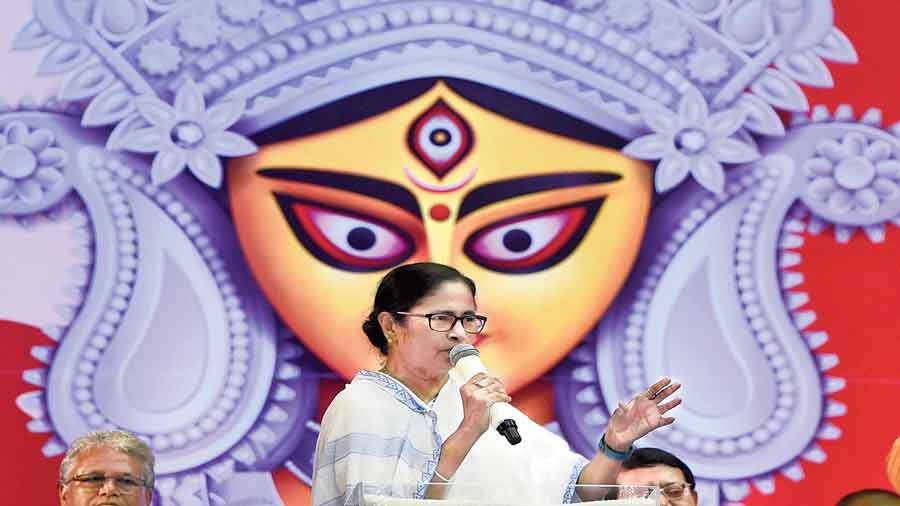On the eve of Independence Day, the Bengal government’s department of women & child development and social welfare celebrated the “internationally acclaimed brainchild of [chief minister]Mamata Banerjee” — the Kanyashree scheme. Nazrul Mancha witnessed a gathering of over 2,000 students and officials to celebrate Kanyashree Divas. The chief minister’s tweet put the project in perspective: “The Kanyashree scheme was initiated with the aim of empowering girls across Bengal. As it continues to run successfully, on #KanyashreeDibas, I congratulate every single girl enrolled in the scheme for dreaming big and fearlessly chasing your dreams. Keep shining brighter!”
For those unfamiliar with this scheme, girls are given financial assistance under Kanyashree-I and Kanyashree-II. The K-I level is for students in between Classes VII and XII (annual financial assistance of Rs 1,000) and K-II is a one-time grant of Rs 25,000 (given to girl students who complete Class XII without getting married). The government has reportedly spent over Rs 12,000 crore on the scheme till now.
The women & child development and social welfare minister,Shashi Panja, said, “Through Kanyashree, money is not the only thing, it is to also give them strength and self confidence to dream and progress is taking place. This is for everyone, whoever is studying and has not gotten married, they are Kanyashree”. Mentioning that there are nearly 8,000 Kanyashree Clubs, the department also released a short audio-visual film, Ami Kanyashree, Ami Cyber Yoddha. The same day, there were eye-catching advertisements in leading dailies announcing: “Almost 80 lakh Kanyashrees touched by the light of progress.”This is certainly laudable,if it were not for the grim reality about where and how the funds are used by the recipients.The government certainly does not monitor whether the students are dropping out of schools and colleges after they receive Rs 25,000 in their accounts. A random survey unveiled some unsavoury facts.
Mita, the daughter of our domestic help, completed her schooling and enrolled in a college. Once she turned 18, she collected a Kanyashree form from her school and Rs 25,000 was deposited in her account. Her parents added a room to their house with the money meant for their daughter’s higher education. Rajlakshmi, whose widowed mother could scarcely make ends meet, used her largesse to straighten her long tresses and buy some ornaments. Shiuli, another student, spent it on a new wardrobe. Others have opted for smartphones,mainly to play games, instead of laptops which would have helped them during online classes.
Among countless girls from families that do not require this financial assistance, only one student, Banani Chandra, had in 2019 declined the award saying that her family could afford to pay her fees and that the money could well be spent by the government more productively.It put the authorities in a quandary because the government directive was that every girl student was entitled to this amount. Never mind whether they need it. Given the financial crunch the government claims to be facing, wouldn’t it be logical to monitor how the Kanyashree funds are utilised by students? Should a modicum of accountability not be in place?
But populism hardly ever weighs merits, fiscal prudence or long-term effects. For instance,the largesse to each Durga Puja committee of Rs 60,000 announced by the chief minister earlier this week makes one wonder how much more the private firms and educational institutions will need to cough up this year. By her own admission, the state’s coffers are empty, and yet the doles are unending. Sponsorship amid coercion is, therefore, a logical outcome of such magnanimous announcements. Should we be blasé enough to revel in extended Puja vacations, throwing caution to the wind?










